The valve is an integral part of the heart muscle, damage to which leads to functional disorders in the work of the entire cardiovascular system.
The pathological condition of this part of the human body can be of an innate nature of origin, or it is the consequence of serious illness. Stable work of the heart is provided simultaneously by several types of valves that regulate the continuous circulation of venous and arterial blood.
Record content:
- 1 What is a heart valve?
- 2 Varieties of heart valves and their function
-
3 Heart valve defects and their varieties
- 3.1 Acquired heart muscle defects
- 3.2 Congenital malformations
- 4 Valve stenosis or insufficiency - what's the difference?
- 5 Causes of heart valve defects
- 6 Symptoms of pathologies
-
7 Clinical manifestations of heart valve pathologies, diagnosis and differential diagnosis
-
7.1 Inspection
- 7.1.1 Palpation and percussion of the heart
- 7.1.2 Auscultation of the heart
- 7.1.3 Functional noises
- 7.1.4 Arterial pressure
-
7.2 Instrumental diagnostics
- 7.2.1 ECG
- 7.2.2 X-ray examination
- 7.2.3 Echocardiography
- 7.2.4 Cardiac catheterization
-
7.1 Inspection
-
8 Treatment methods
- 8.1 Therapeutic treatment
- 8.2 Drug therapy
-
8.3 Surgery
- 8.3.1 Commissurotomy
- 8.3.2 Prosthetics
- 8.4 Protection against infection with valve defects
- 9 Is it possible to exercise for heart valve pathology and after surgery?
- 10 Possible complications of heart valve failure
- 11 Forecast
- 12 Heart Valve Disease Videos
What is a heart valve?
The heart valve is a separate structural element of the heart, which is formed from the folds of the endocardium (the inner layer of this organ). The main purpose of the valve system is to organize a directed blood flow by blocking arterial and venous channels.
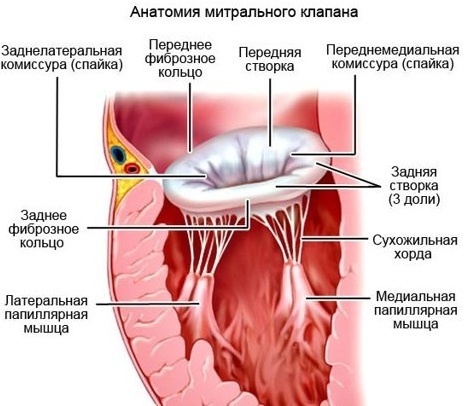
These elements of the heart are located in the atria and ventricles, representing fibromuscular formations. The leaflets of the heart valves are subjected to enormous stress due to the constant influence of blood pressure, and their damage leads to serious consequences for the whole organism.
Varieties of heart valves and their function
The table below describes the 5 heart muscle valves that are responsible for stable venous and arterial circulation.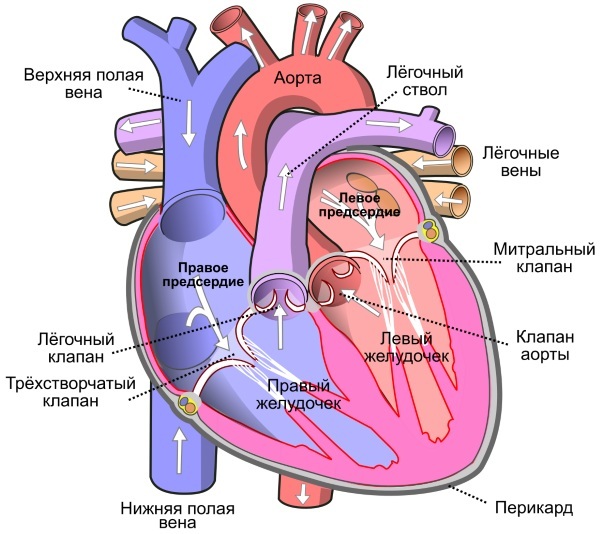
| Valve name | Functional purpose |
| Tricuspid | The tricuspid valve is located between the atrium and the tissues of the right ventricle. This part of the heart muscle consists of 3 connective tissue plates that prevent the formation of a backflow of blood towards the right atrial cavity. |
| Mitral | The mitral valve is a bicuspid element of the heart muscle, it is located between the atrium and the tissues of the left ventricle. This part of the heart has only 2 connective tissue cusps. At the time of contraction of the walls of the left ventricle, using the functions of the mitral valve, backflow of blood into the cavity of the left atrium is prevented. |
| Aortic | The aortic valve is located along the line of demarcation between the aorta and the tissues of the left ventricle. The physiological purpose of this part of the heart is to prevent the backflow of blood from the cavity of the aortic vessel into the left ventricle. This valve of the heart muscle is considered the most complex in its organizational structure, since consists of 3 cusps, which, when connected, block the canal connecting the left ventricle with the cavity aorta. All leaflets that regulate the flow of the aortic valve are attached to the annulus fibrosus. The last element of the heart serves as a connecting hole between the arterial vessel and the walls of the left ventricle. |
| Pulmonary | The pulmonary valve is located in the area of removal of the pulmonary trunk from the cavity of the right ventricle. This part of the heart has 3 main valves, which ensure a continuous flow of blood only towards the pulmonary trunk. |
| Evstakhiev | The Eustachian valve was first described and painted by the Italian physician Eustachius Bartolomeo. This part of the heart muscle is a valve, which is located in the area of the inferior genital vein in the place of its contact with the tissues of the right atrium. The Eustachian valve is a rudimentary formation that has no effect on hemodynamics in the human cardiovascular system (found only in 5% of the world's population). |
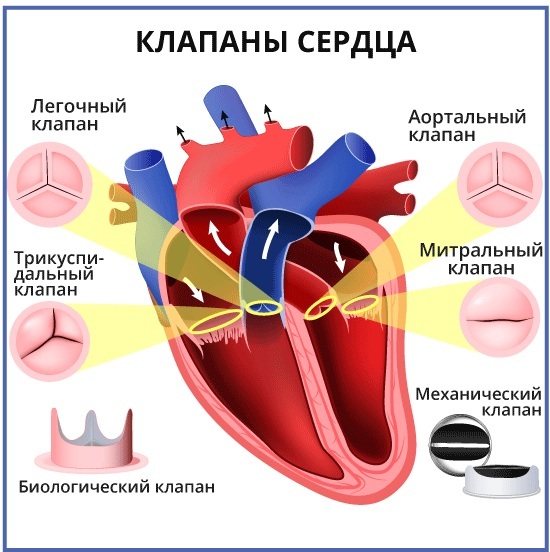
Damage to the heart valves causes the whole body to malfunction. Rebuilding destroyed tissue requires open-heart surgery. In this case, an artificial valve is created, which has a mechanical or biological nature of origin.
Heart valve defects and their varieties
Valvular heart disease is classified into 2 main categories. These are acquired and congenital pathologies.
Acquired heart muscle defects
Pathological conditions of this type of heart valves develop against the background of previously transferred diseases that have had irreversible changes in the structure of the cardiovascular system.
The following acquired heart muscle defects are distinguished:
- pathological narrowing of the walls of the aorta, which prevents the full flow of blood;
- stenosis (prolapse) of the mitral valve (most often diagnosed in young people, but at the same time it may not show any symptoms);
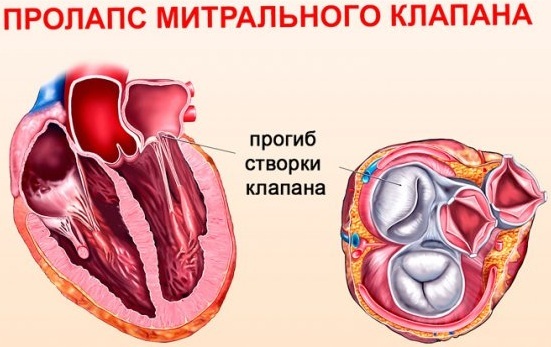
- failure of the aortic valves;
- narrowing of the walls of the right venous duct;
- lack of functional activity of valves with 2 and 3 closing leaflets.
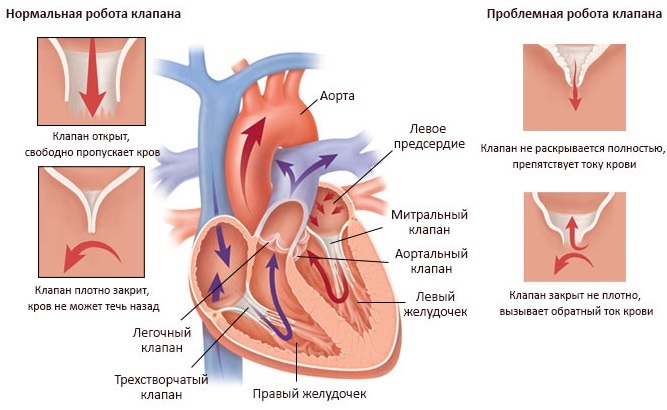
Heart valve damage
Acquired defects are eliminated using an integrated approach. In this case, the means of drug therapy and the method of surgical intervention to restore the impaired functions of the heart are used.
Congenital malformations
Congenital heart valve defects differ in that a person is born with already impaired function of a certain part of this organ.
The following pathologies of this type are distinguished:
- Ebstein's disease (abnormal function of a 3-plate valve);
- atresia, as well as narrowing of the lumen of the valve walls with 3 closing leaflets.
All congenital heart valve malformations must be treated surgically. Patients are shown surgical interventions that are carried out on an open heart, and provide for the performance of plastics of destroyed tissues.
Valve stenosis or insufficiency - what's the difference?
Damage to the heart valves leads to impaired circulation. Stenosis and insufficiency of the valve system differs in that in the first case, a pathological narrowing of the opening occurs, which ensures unhindered blood flow. Against this background, painful symptoms develop, accompanied by problems with blood circulation throughout the body.
With functional insufficiency of the valve, its efficiency decreases to prevent reverse blood flow at the time of contraction of the heart muscle. Both pathologies exclude the maintenance of normal blood circulation, and also cause the occurrence of concomitant diseases of the cardiovascular system.
Causes of heart valve defects
There are many factors, the influence of which can cause the destruction of this part of the heart.
There are the following reasons for the occurrence of heart valve defects:
- previously transferred rheumatism;
- damage to the heart muscle by infectious microorganisms;
- poor heredity;
- living in a region with an unfavorable ecological situation;
- poisoning with toxic chemicals;
- heavy physical activity with a lack of adequate rest.
The development of valve defects can cause concomitant diseases of the cardiovascular system. The cause of the pathological condition of the affected area of the heart is established by the results of a diagnostic examination. Eliminating the influence of a negative factor is a prerequisite for successful treatment.
Symptoms of pathologies
Damage to the heart valves leads to the following symptoms, which significantly reduce the patient's quality of life:
- feeling short of breath;
- heart rhythm disturbances (tachycardia, bradycardia);
- compressive pain inside the chest;
- dizziness;
- loss of consciousness;
- attacks of severe headache;
- light-headedness;
- darkening in the eyes;
- dyspnea;
- fast fatiguability;
- dry cough with a healthy respiratory system;
- pronounced cyanosis of epithelial tissues.
Patients with similar symptoms are subject to a comprehensive examination of the cardiovascular system using laboratory and instrumental research methods. If necessary, the patient is hospitalized in a hospital.
Clinical manifestations of heart valve pathologies, diagnosis and differential diagnosis
In order to detect the pathological condition of the valves of the heart muscle, it is necessary to carry out comprehensive diagnosis of the patient, excluding the possible presence of other concomitant diseases with a similar symptomatology.
Inspection
Examination of a patient with signs of valve dysfunction begins with a preliminary examination by a cardiologist or therapist. The doctor listens to the patient's complaints about the presence of current symptoms, listens to the heart rhythm with a stethophonendoscope for the presence of extraneous noise.
Based on the results of the preliminary examination, the patient is assigned to undergo laboratory and instrumental examinations.
Palpation and percussion of the heart
Palpation and percussion of the heart cannot be classified as the most informative diagnostic methods.  This type of examination is used at the preliminary examination stage. The cardiologist feels the tissues located in the immediate vicinity of the heart muscle, and also performs tapping of this part of the chest for the development of congestion.
This type of examination is used at the preliminary examination stage. The cardiologist feels the tissues located in the immediate vicinity of the heart muscle, and also performs tapping of this part of the chest for the development of congestion.
Auscultation of the heart
Most pathological conditions of heart valves are characterized by the presence of a systolic click. This is a specific sound in the work of the heart muscle, which is heard at the time of its contraction. A cardiologist who diagnoses a patient listens to the heart.
In the presence of functional insufficiency of the valve, a click and the presence of late systolic murmurs will be heard, which are also clearly audible during the process of auscultation of the heart.
Functional noises
The work of each heart valve is accompanied by the occurrence of a corresponding systolic murmur, which is established in the process of listening to the heart. The presence of signs of a violation of the functional activity of one or another element of the heart muscle is the basis for a more detailed diagnosis using the hardware research method.
Arterial pressure
With damage to the aortic valve, a characteristic clinical picture is observed when diastolic pressure is reduced, and systolic blood pressure is very high. This symptomatology indicates that the patient has developed a severe failure of the functions of this part of the heart muscle.
Instrumental diagnostics
Instrumental diagnostics involves the use of modern hardware equipment that displays the structure of tissues heart, shows the functional state of the heart valves, the possible presence of stenosis or a significant decrease in their performance.
ECG
Electrocardiography is a fast and painless research method that involves fixing electrical impulses of the heart muscle on the surface of a tape of special paper.
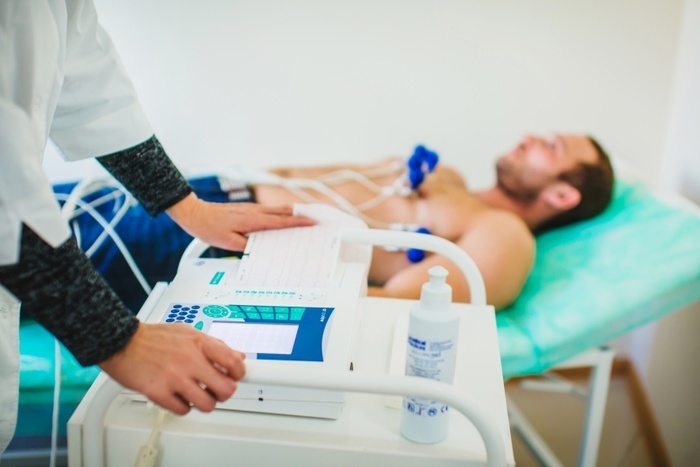
Each ECG curve displays the level of functional activity of a separate area of the heart. Based on the results of the examination, the cardiologist deciphers the results of the electrocardiography.
X-ray examination
When diagnosing irregularities in the work of the heart valves, X-ray examination is used at the discretion of the attending physician.
In this case, a contrast agent is injected into the patient's blood, which reaches the tissues of the heart muscle, and after the implementation of an X-ray image, allows you to see areas of the organ with signs of organic defeat. Currently, this method of hardware diagnostics is used extremely rarely.
Echocardiography
Echocardiography is an advanced ultrasound examination of the heart. The doctor who diagnoses the patient changes the position of the sensitive sensor that records the work of the organ. At the moment, an image is transmitted to the computer screen in real time, showing the anatomical structure of the heart muscle, the volume of pumped blood, changes in the structure of the valves.
Cardiac catheterization
Cardiac catheterization is performed to obtain diagnostic information about the level of arterial pressure inside large arteries approaching the heart, as well as assessing the functional activity of its valves.
The principle of this examination method is that a special catheter is inserted into the patient's femoral artery, which is gradually advanced to the heart muscle. The collected information is used in the complex therapy of valve pathologies and other cardiac diseases.
Treatment methods
Damage to the heart valves leads to long-term health problems. Therapy of this pathology involves the use of an integrated approach with the use of surgical interventions and a course of taking medications.
Therapeutic treatment
Therapeutic treatment involves the constant presence of the patient in a hospital in the cardiology department of the hospital.
In the absence of the need for a surgical operation, the patient receives medication directed to maintain stable blood circulation, as well as to prevent functional insufficiency of individual segments hearts. The duration of therapy depends on the degree of valve damage, as well as the possible presence of complications that have already developed.
Drug therapy
During the treatment of stenosis and functional insufficiency of the heart valves drugs of the following pharmacological groups can be used:
- antibacterial and anti-inflammatory drugs (used if the heart valves have been destroyed by rheumatic endocarditis);
- diuretics in the presence of valve dysfunction, which leads to the development of heart failure;
- antiarrhythmic medicines that stabilize the heart rhythm;
- antiplatelet and anticoagulants, which prevent embolic complications caused by increased thrombus formation.
Damaged heart valves can cause a large number of cardiac diseases, which have their own clinical presentation. The selection of drugs is carried out by the attending physician.
Surgery
The decision on the need for surgical treatment of heart valve pathologies is made by a cardiologist. The main indications for surgical intervention are severe stenosis and failure of these areas of the heart muscle. To restore the full functions of the organ, 2 types of surgical operations are performed.
Commissurotomy
Commissurotomy is a cardiac surgery performed on an open heart. The main goal of this type of surgery is to eliminate adhesions inside the walls of the valve affected by stenosis.
After the expansion of the narrowed opening, the previous blood flow is provided with the restoration of the patient's normal well-being. The patient returns to the previous way of life.
Prosthetics
Replacing destroyed heart valves is a more complex surgical operation that involves performing tissue plastic surgery. The cardiologist performing the operation restores the fibrous ring of the valve, as well as its leaflets, which are designed to regulate blood flow.
In this case, biological or mechanical devices can be used, depending on the specific clinical case. In the absence of complications, the rehabilitation period lasts about 2-3 months. After that, the patient does not experience any discomfort.
Protection against infection with valve defects
Patients with signs of damage to the heart valves should be protected from the effects of pathogenic microorganisms. For this purpose, patients of the melon group are placed in a separate ward, in which the increased rules of sterility are observed.
Is it possible to exercise for heart valve pathology and after surgery?
In the presence of a pathological condition of the heart valves, it is necessary to refrain from performing cardiac loads. After the successful completion of the operation and the passage of the recovery period, it is allowed to engage in physiotherapy exercises, performing moderate training.
Possible complications of heart valve failure
Pathological conditions of the heart valves can lead to the development of the following complications:
- heart failure;
- thromboembolism;
- myocardial infarction;
- arrhythmia;
- ischemic disease;
- endocarditis.
The main risk of heart valve insufficiency is that a severe attack can occur at any time, which can provoke a fatal outcome.
Forecast
With timely admission to the hospital with successful therapy, the prognosis for a full recovery of heart functions is favorable. Heart valves are an important part of this organ of the human cardiovascular system, which provide a unidirectional flow of venous and arterial blood.
Damage to these areas of the heart leads to the development of severe cardiac diseases in the form of ischemic illness, heart failure, thromboembolism, the risk of sudden heart attack increases myocardium.
Pathological conditions of heart valves can be congenital and acquired in origin. Hereditary heart defects are only subject to surgical treatment. Acquired valve diseases can be treated with comprehensive therapy.
Heart Valve Disease Videos
Why valve defects are dangerous:



